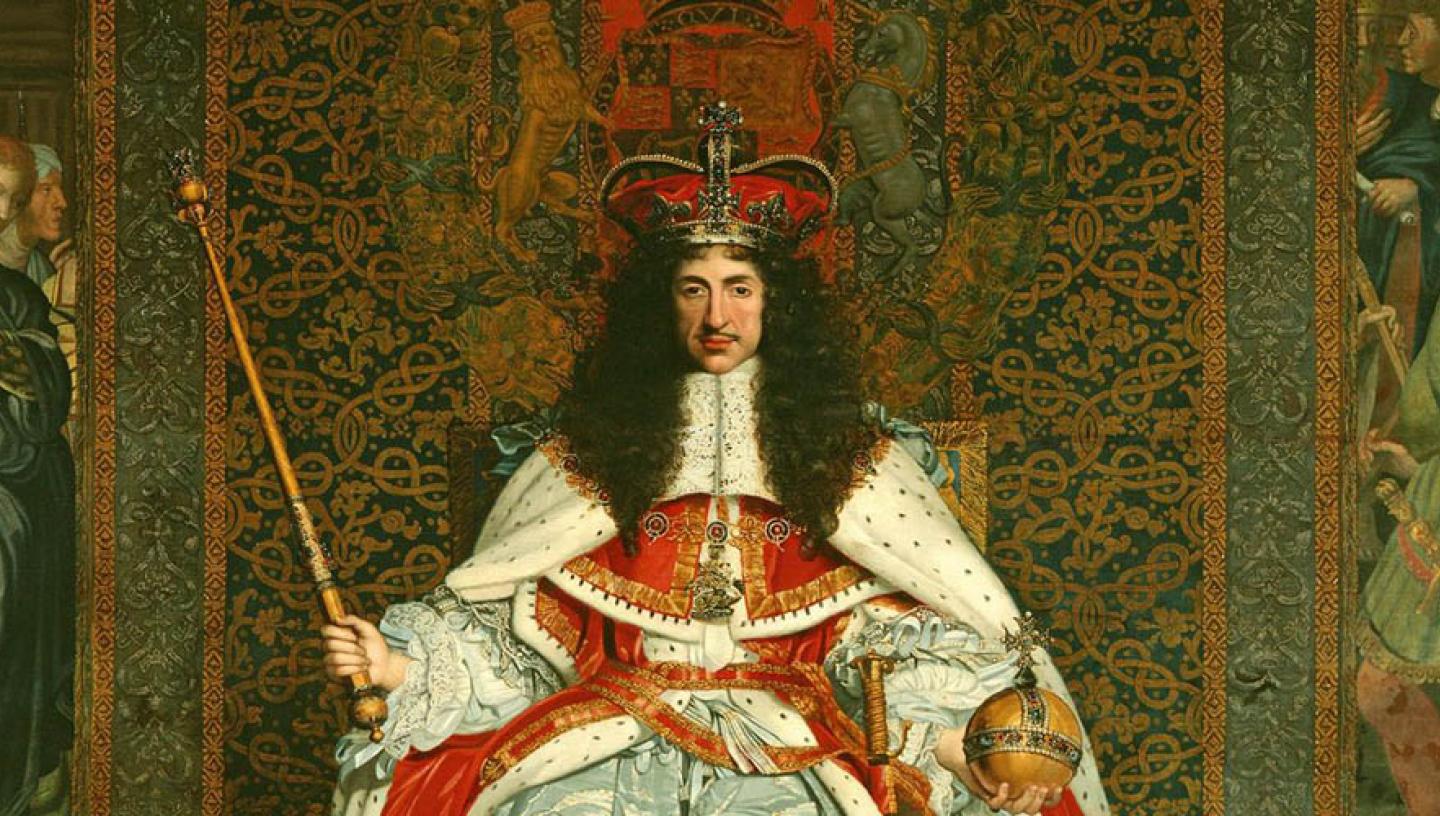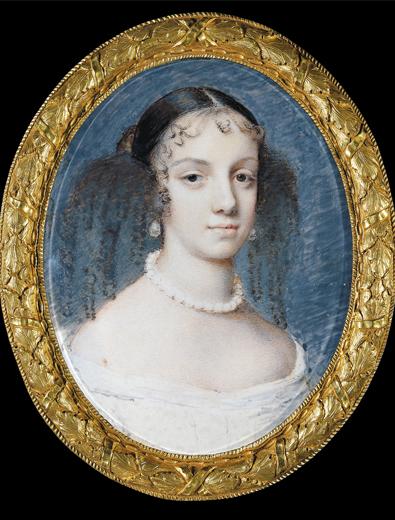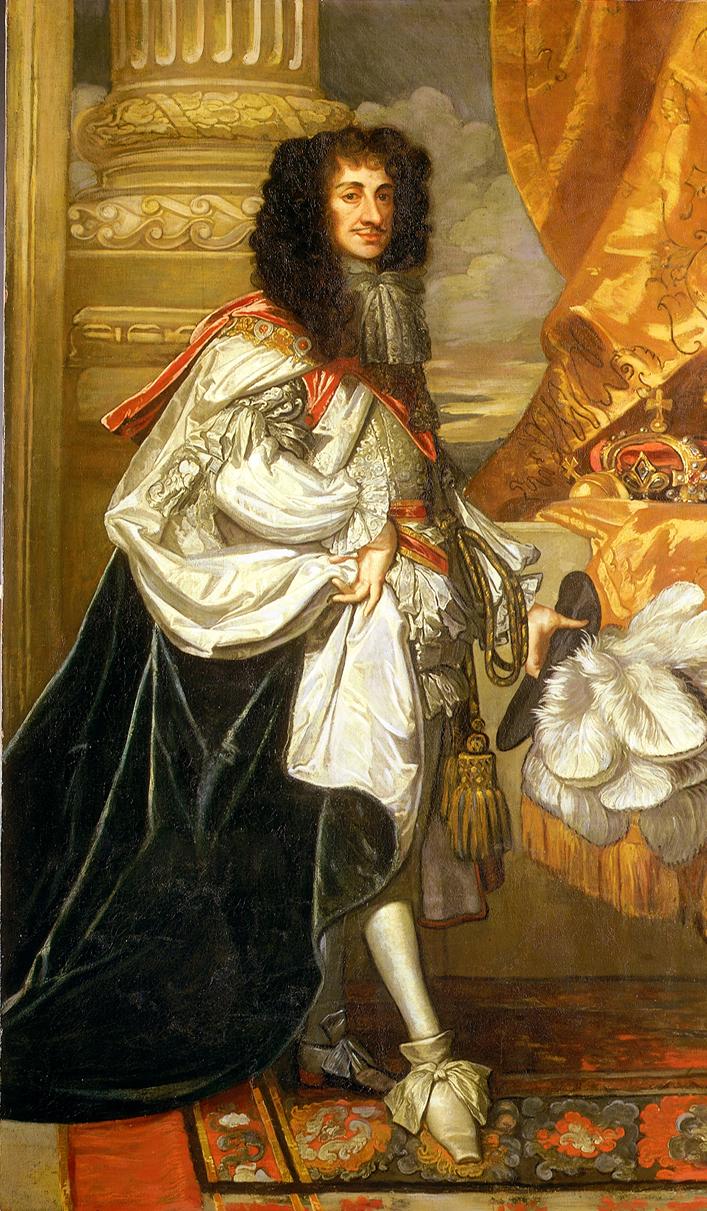
He was certainly mercurial and brilliant, and quite possibly lustful and in the grip of dark and foreign powers. King Charles II was however, one of the nation’s most interesting and beguiling rulers.
As a teen, his golden childhood was ripped away from him by the Civil War. Fight and flight marked these years with the execution of his beloved father shattering his world. His twenties were spent hopping around continental courts, begging favours and finances.
A time to celebrate
On his thirtieth birthday, he left all that behind and triumphantly returned to London as King. In the end, the national experiment with republicanism had collapsed and the dour days of Cromwell and the Commonwealth were swept away with festivities and mirth.
Charles II was tall, handsome, sharp of mind, impeccably attired and charming. But he would need all his guile to manoeuvre and survive the tempestuous times in which he ruled.
Charles II's coronation
After the death of Oliver Cromwell, his son Richard became Lord Protector. However Richard lacked the leadership qualities of his father, and he was quickly resigned.
It was decided that Charles' son should return to his rightful role, and become king. He would rule closely with parliament, and returned to popular acclaim.
New regalia was made (the previous crown had been melted down when Charles I was executed) and the coronation took place on 23 April 1661.
Affairs of the heart: Charles II's mistresses
The young King’s heart was soon taken by the married beauty Barbara Villiers who Charles would show off publicly. Villiers came to symbolise the excess and promiscuity of the Restoration court. His brother’s secret marriage to a commoner also added an air of scandal to the crown.
The early years of his reign were marked by a flair for public spectacle, winning over nobility and commoner alike. There was also private tragedy with the death of two of his closest family members.
Despite having fathered a child by his mistress, Charles was keen to marry. Catherine of Braganza, daughter of King John IV of Portugal, was chosen. Her dowry was generous indeed: two million crowns and the cities of Bombay and Tangiers thrown in for good measure.
The marriage was to be courteous rather than passionate. The couple spoke no common language and the Portuguese Catherine was considered to measure up poorly next to the beauty of the King’s mistress. Worse, the King insisted on openly carrying on his affair and fathering a second child with Barbara.
Charles II and religion
Just as Charles negotiated the conflicts of marriage and mistresses, the nation was an irreconcilable tangle of religious conflicts. Puritanical Protestants still had great sway in England and even more so in Scotland. The King was personally close to many Catholics and their sympathisers. Somewhere in the middle lay the established Church of England, itself wracked by similar tensions.
To show favouritism to one side or even tolerance was potentially fatal. Although Charles managed to please no one in this respect he somehow managed to avert open rebellion. Nevertheless, Charles was to be frustrated constantly by warring factions in Parliament divided along religious lines.
Because Charles had no legitimate children, there was a widespread fear that his Roman Catholic brother James would inherit the throne.
Plague, Fire, War and Peace
Although it would be remembered as a time of great scientific advances with Charles’ Royal Society at the forefront, the 1660s were still dominated by superstition. What could speak more strongly of divine displeasure than pestilence and disaster? The Great Plague of London came a mere five years into his rule. Followed by the Great Fire of London the following year should surely have seen off the King but with guile Charles survived these events. As well as this the English lost the Second Anglo-Dutch war in 1667.
Just as the City seemed to spring anew from the ashes of the Great Fire of London, science and commerce offered hope of a better future. The misery of the recent past was perhaps enough to discourage the discontent from rebellion. Charles sued for peace abroad with the Dutch and signed the Treaty of Breda. Soon after, a formal alliance with Holland and Sweden was created.
Peace seemed to unleash the King’s loins and now he would be linked with a long list of women, presumably overlapping. Countesses, singers and, famously, the orange seller turned actress Nell Gwyn graced the royal bed. Barbara was pensioned off.
Charles II and the founding of the Royal Observatory
Improving navigation at sea was a major challenge for 17th century merchants and their sailors. Thanks to Charles II’s French mistress, Louise de Kéroualle, rumours started to circulate at court that French astronomer, Sieur de St. Pierre, had devised a means of determining longitude at sea by using observations of the Moon’s position in relation to the background stars.
On 4 March 1675, the King signed a Royal Warrant appointing John Flamsteed as 'astronomical observator..[..]..so as to find out the so much-desired longitude of places for the perfecting the art of navigation'. It was the founding of Britain’s first state-funded scientific research institution.
Find out more about the history of the Royal Observatory
Brinksmanship
Charles had survived so far, and wisely kept his distance from his competing ministers and mistresses. Somehow he managed to keep them all in play but none ascendant.
Charles II signed a secret treaty with King Louis XIV of France in which England offered aid in a war against the Dutch in return for the French stalling their naval expansion.
Sensationally, he also offered to declare himself a Catholic in return for money. Although the funds began to flow, (freeing Charles of some of the influence of Parliament) the conversion never seemed to happen, at least not publicly.
His brother James was forced to resign as Lord Admiral, despite noted service, when he refused to renounce his own new-found Catholicism. At once this explosive secret about the heir to the throne became public news.
How did Charles II die?
Charles was caught between support for his brother and a hysterical reaction to ‘Popish’ plotting. Parliament tried to cut James out of the succession and Charles looked to marry off James’ daughter to Protestant Prince William of Orange in Holland.
In 1681 with Parliament poised to declare itself in charge of the royal succession, the King dissolved it to sit no more in his reign. At the very edge of the precipice, somehow Charles clung on. His final years were spent settling scores and concentrating power.
On his deathbed, he finally converted to Catholicism and on 6 February 1685 he passed away peacefully. His brother James fared less well and ruled for only three years before fleeing the country to make way for William of Orange.




